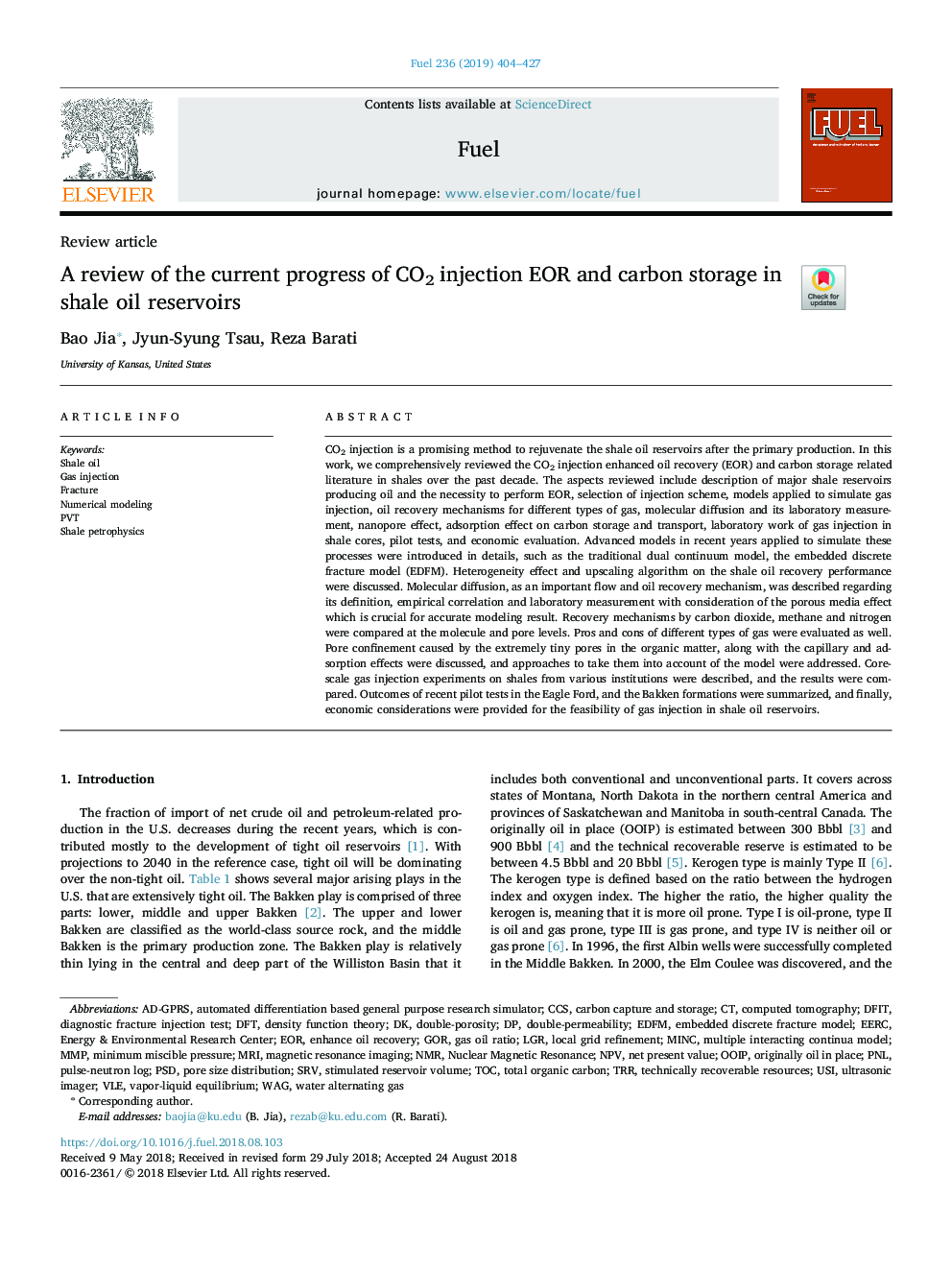| Article ID | Journal | Published Year | Pages | File Type |
|---|---|---|---|---|
| 10145432 | Fuel | 2019 | 24 Pages |
Abstract
CO2 injection is a promising method to rejuvenate the shale oil reservoirs after the primary production. In this work, we comprehensively reviewed the CO2 injection enhanced oil recovery (EOR) and carbon storage related literature in shales over the past decade. The aspects reviewed include description of major shale reservoirs producing oil and the necessity to perform EOR, selection of injection scheme, models applied to simulate gas injection, oil recovery mechanisms for different types of gas, molecular diffusion and its laboratory measurement, nanopore effect, adsorption effect on carbon storage and transport, laboratory work of gas injection in shale cores, pilot tests, and economic evaluation. Advanced models in recent years applied to simulate these processes were introduced in details, such as the traditional dual continuum model, the embedded discrete fracture model (EDFM). Heterogeneity effect and upscaling algorithm on the shale oil recovery performance were discussed. Molecular diffusion, as an important flow and oil recovery mechanism, was described regarding its definition, empirical correlation and laboratory measurement with consideration of the porous media effect which is crucial for accurate modeling result. Recovery mechanisms by carbon dioxide, methane and nitrogen were compared at the molecule and pore levels. Pros and cons of different types of gas were evaluated as well. Pore confinement caused by the extremely tiny pores in the organic matter, along with the capillary and adsorption effects were discussed, and approaches to take them into account of the model were addressed. Core-scale gas injection experiments on shales from various institutions were described, and the results were compared. Outcomes of recent pilot tests in the Eagle Ford, and the Bakken formations were summarized, and finally, economic considerations were provided for the feasibility of gas injection in shale oil reservoirs.
Keywords
PVTNPVEDFMOOIPMINCMinimum miscible pressureSRVTRRLgrGORPNLPSDVLEGas oil ratioWAGTOCMMPCCSnuclear magnetic resonanceDFTnet present valueEORUSIMRIEnhance oil recoveryGas injectionNMRMagnetic resonance imagingVapor-liquid equilibriumPore size distributioncomputed tomographyCarbon capture and storageStimulated reservoir volumeDouble-porosityFractureNumerical modelingEmbedded discrete fracture modelDensity function theoryShale oilLocal grid refinementTotal organic carbonWater alternating gas
Related Topics
Physical Sciences and Engineering
Chemical Engineering
Chemical Engineering (General)
Authors
Bao Jia, Jyun-Syung Tsau, Reza Barati,
